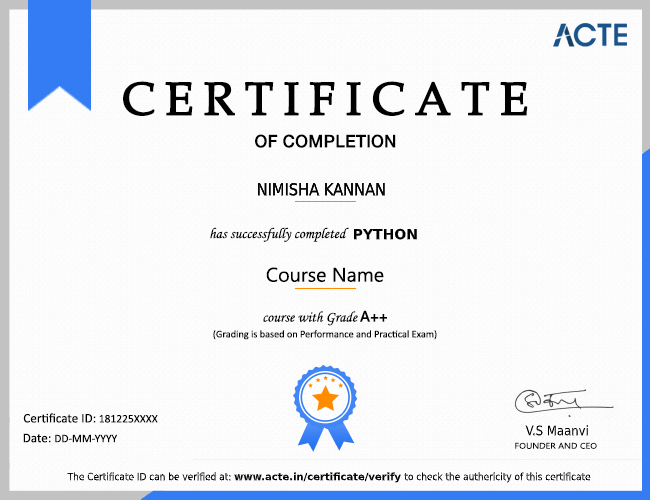C++ allows procedural programming for intensive functions of CPU and to provide control over hardware, and this language is very fast because of which it is widely used in developing different games or in gaming engines. C++ mainly used in developing the suites of a game tool. abstraction makes learning a programming language easier. C++ is still considered a high-level language, but with the appearance of newer languages (Java, C#, Ruby etc...), C++ is beginning to be grouped with lower level languages like C. Enroll Now with us ACTE C & C++ Classroom & Online Training Course.
It is true that you can use almost any language at the back-end, for instance, Google uses C++, Java and Python (along with Go). For low-level data processing, C++ fits the best, for background jobs like updating user's friend recommendations, Java is a good option. C++ allows procedural programming for intensive functions of CPU and provide control over hardware, which it is widely used in developing different games or in gaming engines. C++ mainly used in developing the suites of a game tool.
Future of C and C++, Not only it is a fundamental language but its permissive nature allows the user to manage program memory as it offers the feature of dynamic memory allocation which makes it much faster than any other language. Today, every computer literate person is aware of the term “C/C++ Programming”. Scope of Variables in C++ In general, the scope defined as the extent up to which something can worked with. In programming also the scope of a variable defined as the extent of the program code within which the variable can we accessed, declared, or worked with it.
The Demand for C/C++ in the Market But, it is also important to note that most of the developers know how to code in C and C++. It is the minimum requirement for any programmer to know C/C++ programming to hire. Hence, it is safe to say that C/C++ is the prerequisite of all other languages. In conclusion, C++ in 2020 will continue to remain in high demand owing to its performance, reliability, and the wide variety of contexts in which it can used.
We are happy and proud to say that we have strong relationship with over 700+ small, mid-sized and MNCs. Many of these companies have openings in C & C++. Moreover, we have a very active placement cell that provides 100% placement assistance to our students. The cell also contributes by training students in mock interviews and discussions even after the course completion.
Yes, it is a bright field; there are bright prospects and various avenues in C and C++ programming for candidates with extensive knowledge. If you are not aware of the career in C/C++ Programming, then you have come to the right place. It is also important to note that most of the developers know how to code in C and C++. It is the minimum requirement for any programmer to know C/C++ programming to hire. In India, the pay scale of a C and C++ programmer varies from two lakhs per annum to 30 lakhs per annum. For a novice, who simply did a 2-3 months certification course of C programming is likely to hired by a small-scale organization.
As we know both C and C++ are programming languages and used for application development. The main difference between both these languages is C is a procedural programming language and does not support classes and objects, while C++ is a combination of both procedural and object-oriented programming languages. C and C++ share a similar syntax, this is the aspect of both languages that are most similar. ... This is why it said that C++ is a “superset” of C. Yet remember, this similarity is in syntax only. C is an imperative programming language, whereas C++ is an object-oriented programming language.
Obsoletely, it is based upon a Student, It take an average person to learn all the fundamentals of the C & C++ language. You will get the Syntax of the language quickly (2–3 months with no experience) assuming you have no experience with programming: You are learning 2–4 hours per day 5 days per week.
Our courseware is designed to give a hands-on approach to the students in C & C++. The course is made up of theoretical classes that teach the basics of each module followed by high-intensity practical sessions reflecting the current challenges and needs of the industry that will demand the students’ time and commitment.
Yes, it is a good language to learn because it doesn't hide anything from you and because so many other languages use a similar syntax. In addition, it has some object-oriented design that can help you get ready to take on other languages. C++ is going to be the most effective on big projects when there is many data to manage. ... Moreover, when you will master C++, it will be super easy for you to jump into Java, C# and pretty much most of similar languages. Many of them inherit many functions from C++ so it is definitely useful to learn it.
Future of C and C++ Not only it is a fundamental language but also its permissive nature allows the user to manage program memory as it offers the feature of dynamic memory allocation, which makes it much faster than any other language. Today, every computer literate person is aware of the term “C/C++ Programming”. It has a good future and is a sound investment and often C++ engineers are good at other languages as well, I generally picked up mobile development faster than the specialist Java programmers (true story).... People who major in C++ and competitive programming tend to pick up new technologies faster.
Top Reason You Can Still learn C & C++ Programming Languages
Helps You Learn Other Advanced Programming Languages.
Improve Performance.
Master Computer Theories and Fundamentals.
C/C++ Is EVERYWHERE!.
Interfacing Languages.
C/C++ Is Fast and Efficient.
It Is OK, If You Do not Know C++!.
C++ Programming:
C++ is a general-purpose programming language created by Bjarne Stroustrup as an extension of the C programming language, or "C with Classes".
Two ways to list programming languages:
- Alphabetically
- Chronologically
But if we want to categorize or classify languages, we need to look at the look and feel of the language, its execution model, or the kind of programming paradigms most naturally supported.
Types of Programming Languages:
Different languages have different purposes, so it makes sense to talk about different kinds, or types, of languages. Some types are:
- Machine languages, that are interpreted directly in hardware
- Assembly languages, that are thin wrappers over a corresponding machine language
- High-level languages, that are anything machine-independent.
- System languages, that are designed for writing low-level tasks, like memory and process management.
- Scripting languages, that are generally extremely high-level and powerful.
- Domain-specific languages, that are used in highly special-purpose areas only.
- Visual languages, that are non-text based.
- Esoteric languages, that are not really intended to be used, but are very interesting, funny, or educational in some way.
These types are not mutually exclusive: Perl is both high-level and scripting; C is considered both high-level and system. Some languages are partially visual, but you get to type bits of code into little boxes.
Other types people have identified: Toy, Educational, Very High-Level, Authoring, Compiled, Interpreted, Free-Form, Curly Brace, Applicative, Homoiconic, Von Neumann, Expression-Oriented, Persistent, Concurrent, Data-Flow, Array, Stack-Based, Concatenative, Action, Reactive, Constraint, Glue, Reflective, Query, Intermediate, Quantum, Hybrid, Embeddable, Macro, Tactile.
Machine Languages:
Most computers work by executing stored programs in a fetch-execute cycle. Machine code generally features:
- Registers to store values and intermediate results.
- Very low-level machine instructions (add, sub, div, sqrt) which operate on these registers and/or memory.
- Labels and conditional jumps to express control flow.
- A lack of memory management support programmers do that themselves.
- The machine instructions are carried out in the hardware of the machine, so machine code is by definition machine-dependent. Different machines have different instruction sets. The instructions and their operands are all just bits.
- Machine code is usually written in hex. Heres an example for the Intel 64 architecture.
Assembly Languages
An assembly language is an encoding of machine code into something more readable. It assigns human-readable labels (or names) to storage locations, jump targets, and subroutine starting addresses, but does not really go too far beyond that. Its really isomorphic to its machine language. Heres the function from above on the Intel 64 architecture using the GAS assembly language.
High-Level Languages:
A high-level language gets away from all the constraints of a particular machine. HLLs may have features such as:
Names for almost everything: variables, types, subroutines, constants, modules
- Complex expressions
- Control structures (conditionals, switches, loops)
- Composite types (arrays, structs)
- Type declarations
- Type checking
- Easy, often implicit, ways to manage global, local and heap storage.
- Subroutines with their own private scope.
- Abstract data types, modules, packages, classes
- Exceptions.
System Languages:
System programming languages differ from application programming languages in that they are more concerned with managing a computer system rather than solving general problems in health care, game playing, or finance. In a system langauge, the programmer, not the runtime system, is generally responsible for:
- Memory management
- Process management
- Data transfer
- Caches
- Device drivers
- Directly interfacing with the operating system
- Scripting Languages
- Scripting languages are used for wiring together systems and applications at a very high level.
They are almost always extremely expressive (they do a lot with very little code) and usually dynamic (meaning the compiler does very little, while the run-time system does almost everything).
Esoteric Languages:
An esoteric language is one not intended to be taken seriously. They can be jokes, near-minimalistic, or despotic (purposely obfuscated or non-deterministic).






























